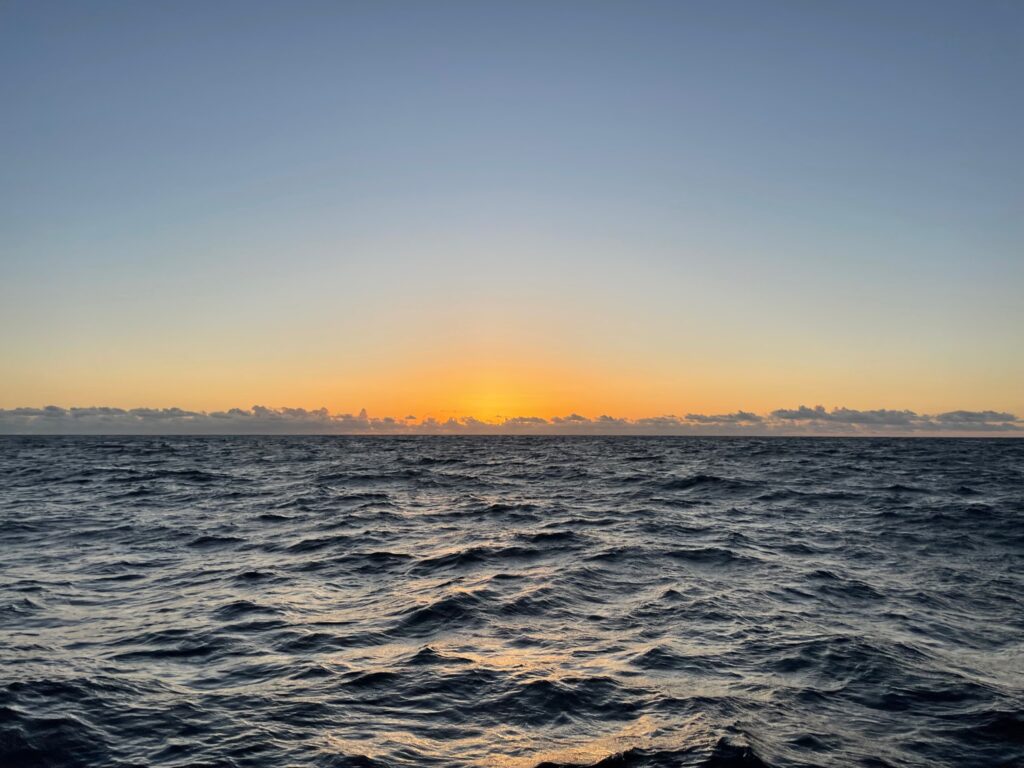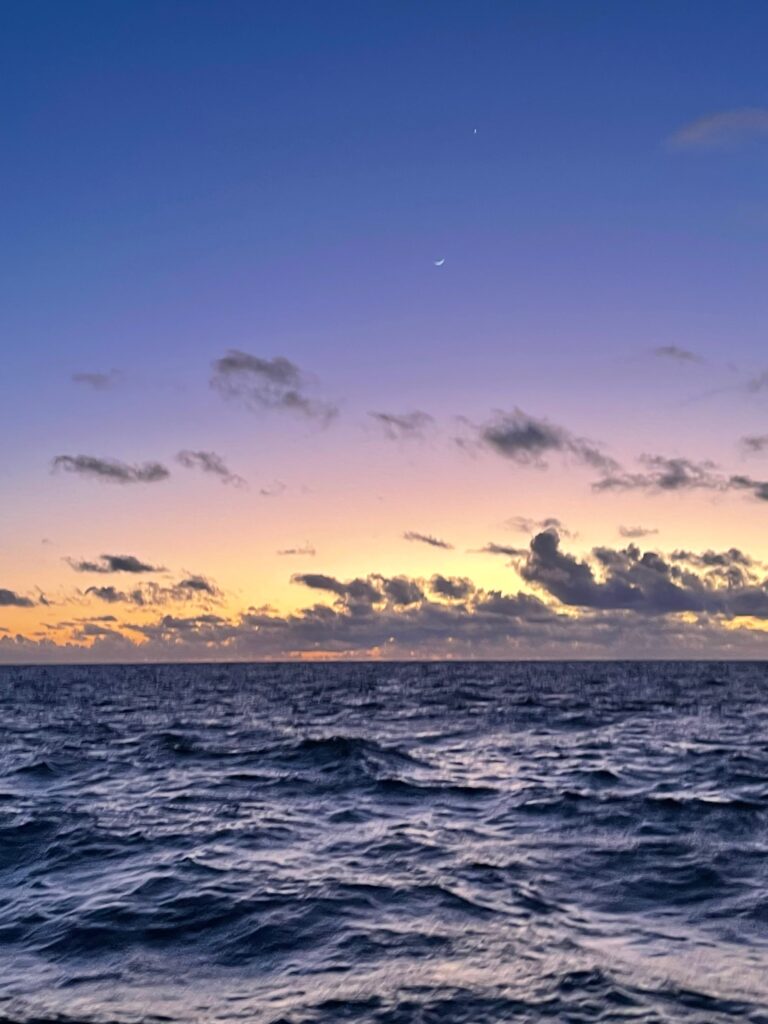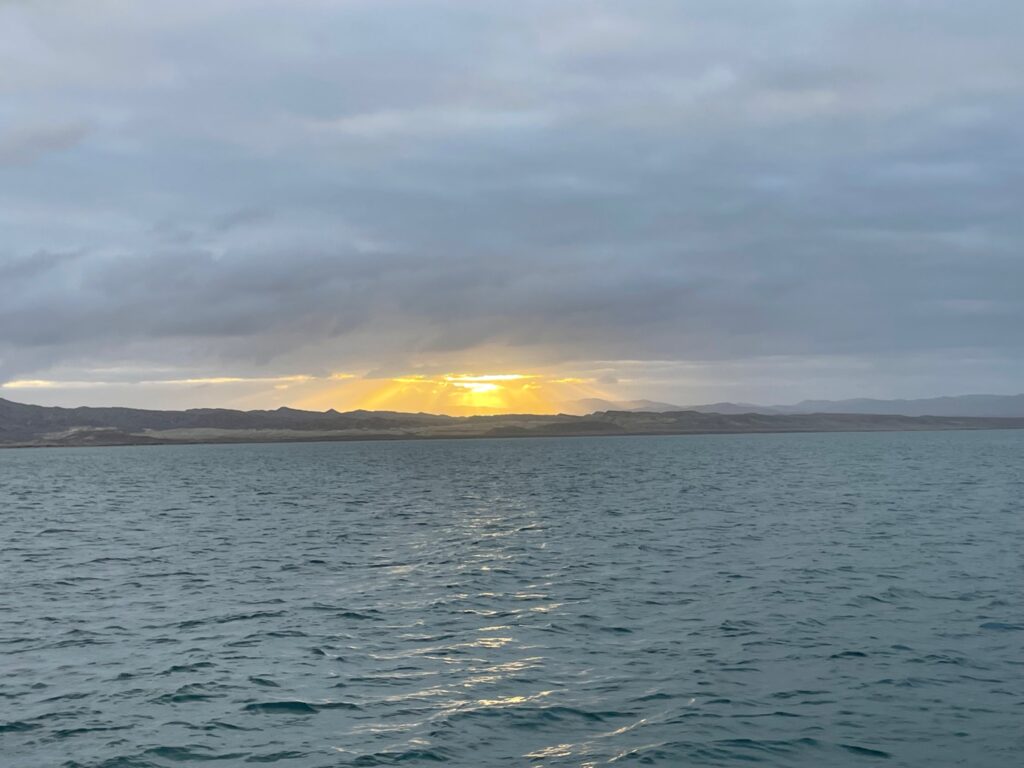Tuesday, February 21 — The seas had been calm on Monday until about 2030 (8:30 pm), when the swells, swell period and wind chop all started to pick up. By midnight, Kosmos was pitching so much that we had to always had to have one hand holding onto the boat or else we’d get knocked over. The forecast didn’t have the seas picking up this much this fast; it was supposed to be a gradual worsening.
The wind continued to increase throughout the night. It was hitting us on the forward port quarter (for a visual, from 10:00 on a clock). Even though it was dark, from the incredibly uncomfortable motion, it was obvious that the wind chop was coming from that direction, while the swells were on our nose, making for confused seas. The motion was like a half-pitch, half-roll.
At 0400, an alarm went off which indicated that the autopilot couldn’t see the data from the navigation system. Christi woke Eric up. He turned it off and back on again, and it magically worked fine.
When it was finally light enough to see, we surmised that it was probably 5 – 6 foot swells at about 4 – 6 seconds, plus 2 – 3 foot wind chop.
Keith vomited almost the minute he woke up. He moved to the salon couch, which is the spot on the boat with the least motion in head seas, and spent the entire rest of the passage sleeping on the couch. He did vomit again when he tried to eat.
In the late morning, the VHF antenna unscrewed from its base in the middle of the night. Eric had to go out and screw it back into the holder. Christi went out to help. Fortunately, we were able to reach it from the top deck without actually climbing up on top of the pilot house — that would have been treacherous. Eric managed to get it screwed back in okay, but the bad part was that the cable had come out. Just being outside and leaning onto the pilot house was was gross — between the water from the rain/waves, bird poop, oily resin from La Paz, and salt chunks, it was icky. And it was so, so rocky. But we did see dolphins playing on the side of the boat.
Sea conditions were the same until about 1630 (4:30 pm), when they got even worse. We think the sustained swell height was about the same, but the swells were hitting at more rapid intervals, plus we were getting occasional bigger waves. The rapid intervals made for true hobby horsing, and when the bigger waves came, Kosmos would smack down hard. We really had to hold on tight when we moved around. We also had a lot of sea spray hitting the windows.
It did lightly rain on and off for the rest of the passage, and on Tuesday, we saw a couple of rainbows.

Sunset

Video of sea conditions shortly after sunset
Cool shot of the crescent moon in the last bits of light. You can also get a sense of how wavy it was in the water.

After dark, the boom came loose. Eric had to go out and tighten the lines, which was difficult to do in all of the motion. And it was still gross on the top deck.
That night, we saw another boat. We called it multiple times and it never never responded, even with the hand held. We didn’t know if this meant that our main VHF radio antenna was no longer working or if it was just a non-responsive boat. In the early morning, we saw another boat and successfully called them. That was a relief!
There were two more data failure alarms, one on Tuesday afternoon and one on Wednesday morning, which were both again cleared by turning it off and on again. Eric thought the connection must be loose.
The only other bit of news to report was that the motion made a Corelle coffee cup fall off of a table and shatter. While Corelle was more shatter resistant than other materials, their advertising that they were shatter-proof was a lie.
We entered Bahia Tortuga at around 0700 on Wednesday. The sun had already risen, but was mostly blocked by the clouds. Occasionally, beams of light would briefly peek out from behind the cloud cover, but the peeks never lasted long.

to be continued…
